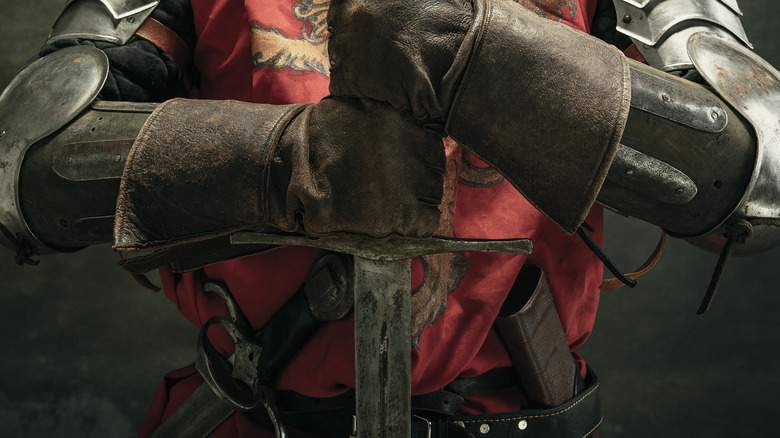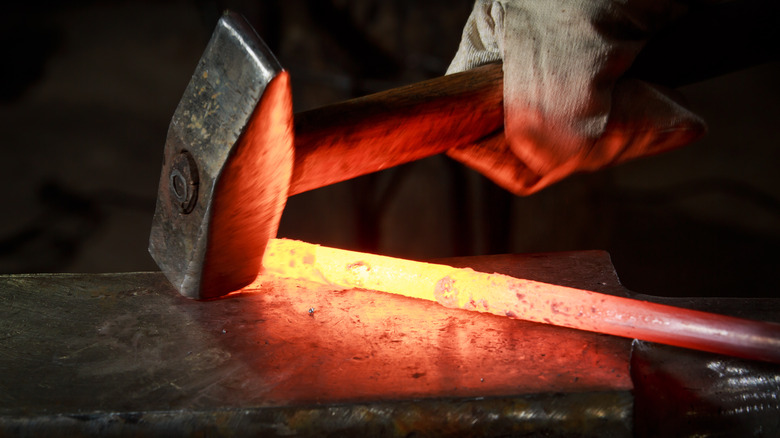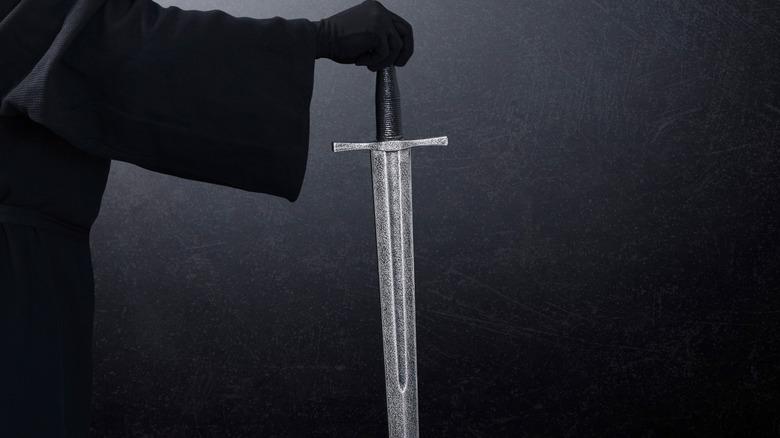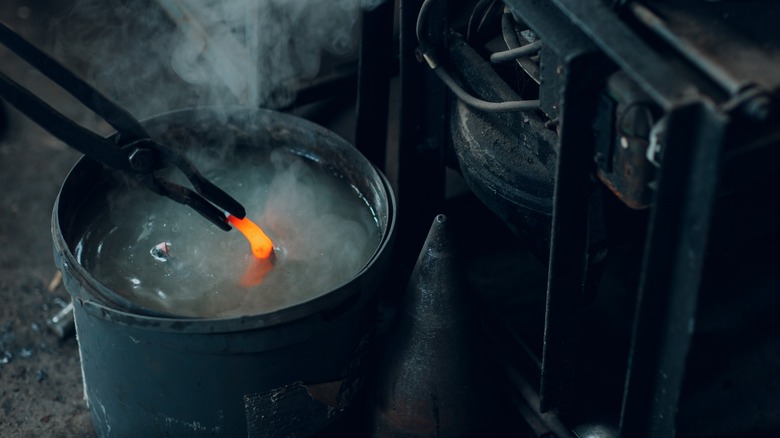This Is The Real-Life Inspiration For Valyrian Steel In Game Of Thrones
It's been over three years since "Game of Thrones" came to what many fans crowned a questionable and disappointing end. A lot of us had an especially hard time saying goodbye to the colossally-beloved fantasy series in the midst of all the upset. But now, after the passing of two throneless winters, dragons are circling the skies in King's Landing once again because HBO brought us back to Westeros in its highly-anticipated spinoff series, "House of the Dragon." The show premiered its first episode on Sunday, August 21 at 9 p.m. EST. By and large, it was met with positive reviews and benevolent enthusiasm from fans and critics. It seems that the future of the Seven Kingdoms is looking promising (via Deadline).
According to Screen Rant, George R.R. Martin's "World of Ice and Fire" plucks rudimentary content from our world's historical epochs and churns it into a bedazzled, bloody tableau of kings, dragons, daggers, and demons that fantasy lovers drool puddles over. "Thrones" fans are pretty well-acquainted with the elegant lethality of Valyrian steel, but for those who don't watch the show and might not know what we're talking about, weapons made from Valyrian steel are lighter, stronger, and infinitely sharper than any other instrument of death in the Seven Kingdoms. They can also kill White Walkers because of the magic used to craft them, as Nerdist reports. Like lots of other little "Game of Thrones" details, the origins of Valyrian steel can be traced back to real life.
Valyrian steel was inspired by Damascus steel
According to Time, the unwavering durability and resilience of Valyrian steel was inspired by Damascus steel, a mysterious metal substance used to forge superior medieval weaponry some few hundred years ago. "The closest real life analog is Damascus steel, but Valyrian steel is a fantasy metal. Which means it has magical characteristics, and magic plays a role in its forging," George R.R. Martin told fans on a public Q&A forum known as The Citadel. Viewers will recall how rare weapons made from Valyrian steel were in the show, with only a small handful of characters being fortunate enough to wield one.
Like Valyrian steel, its manufacturing techniques were elusive and complicated, and the process by which it was made was lost for centuries. However, in 1981, researchers developed what they believed to be the long-lost formula for Damascus steel and shared their findings with The New York Times.
The history of Damascus steel
"Nobody knew how they were made and it was a well-kept secret," Dr. Jefftrey Wadsworth of Stanford University told TIME. "We believe we succeeded." Wadsworth, along with his partner and fellow metallurgist Dr. Oleg D. Sherby, carried out extensive research into the history of Damascus steel and the elaborate process of blacksmithing that weapon makers of old applied to produce supreme battle devices. Apparently, the substance originated in India and was shipped to the Middle East for the manufacturing process, and the practice eventually spread to the European continent (circa 11th century C.E.) and beyond.
Damascus steel was renowned for its alluring surface pattern that emulated a wave-like aesthetic, and the swords held up in battle better than any other weapon. They also rarely required sharpening, so blacksmiths believed that they forged the ideal vendor of death. However, as traditional warfare started to fizzle out with the advent of newer and more devastating weaponry, so did the production of Damascus steel (per TIME).
How is Damascus steel made?
According to Red Label Abrasives, Damascus steel extracts its distinct properties from a high carbon content. It's produced by fusing different metals — like nickel and vanadium — into one lethal alloy that can withstand significant wear and tear over a long period of time. It takes a careful and meticulous process of forging, heating, quenching (cooling), and tempering (reheating) the material over and over again; a process that few blacksmiths had the patience or expertise to execute, as TIME reports.
Legend tells that swords made from Damascus steel grew stronger and stronger with each life they took, though there's (obviously) little in the way of scientific sensibility to support this claim. "By ritual, you repeat what you did," Wadsworth shared after his findings. "That leads to a lot of theories about these swords being quenched into [the bodies of] slaves, to transfer the strength of the slaves to the sword" (via TIME).



